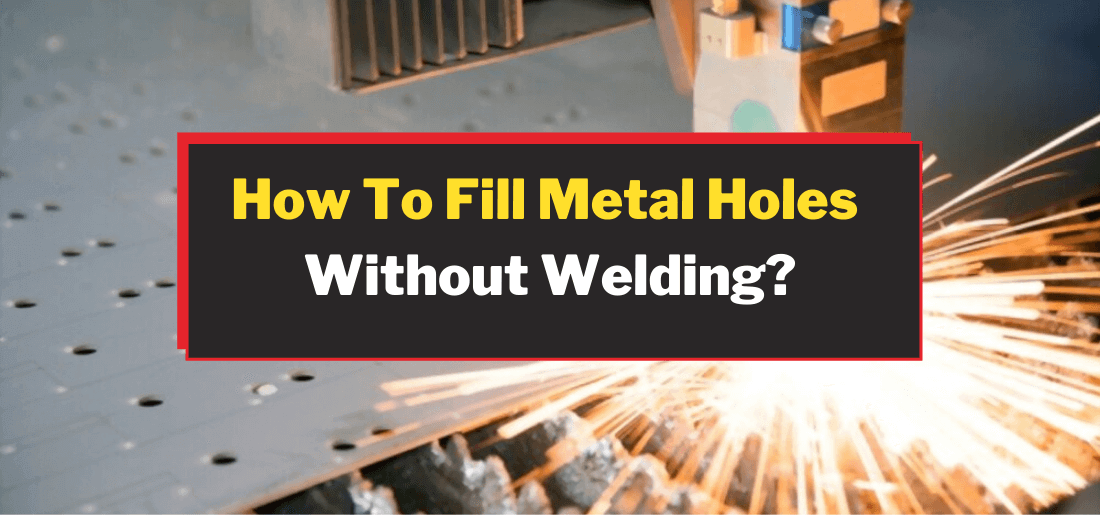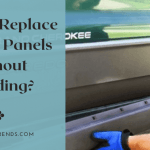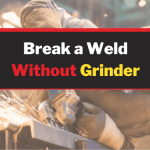What would you do when a hole forms in metal while you are doing work? You will probably try to find the easiest way to fix it. Right? When it comes to rejoining the two metal pieces, then welding is considered the best technique for most welders.
However, in specific circumstances, welding is not an option to solve the problem. In that case, you can fill the holes by applying different methods which are easy, simple, and cost-effective. Besides, they differ in respect to the nature of metal and hole’s size.
So, let’s jump right in to know these less hazardous methods!
Fill Holes In Metals With Reliable Methods
When it comes to joining the two pieces of metal, welding is the choice of many welders. However, there are specific conditions in which you can fill the holes with distinct methods. By applying these techniques, you will undoubtedly get cost-effective and straightforward results. These are as follows:
Tape Or Epoxy
The most common non-welding options for filling holes are the use of tape and epoxy. You can use these techniques in your home without any help from any welder. When you seal a hole by using epoxy, it can’t be a long-lasting solution as it also depends on the damage extent. To stop the reformation of that spot, it’s essential to apply primer on the patch.
Furthermore, the holes that form on automobiles can be repaired by adhesive or aluminum tape. After applying the tape, you can paint over the damage to hide it. Besides, it’s a quick solution when you use adhesive tape on different types of metals.
Filling Agents
This method is the most efficient when you are up for patching the holes of any solid object. By using a gas arc, you can heat the specific section until it turns bright red. After this, you can pour the melted base metal into the hole. Allow it to cool down for the time being.
The molten metal you use to pour in the hole act as a filling agent. It is used to create a bond with the parent metal. However, this method makes the metal surface hard. So, to smooth it down, you can use a sander or sandpaper.
Make sure to take safety measures while making this application, as it can be dangerous. It would be best if you covered your hands with protected gloves, and a professional is needed to supervise the whole process. Moreover, it is more expensive and complicated than the epoxy or tape method.
UV Repair Patch
If you want a permanent and long-lasting solution to fix the holes in metals, then you better try a UV patch for it. It’s an excellent backup method, and you can operate it immediately when the damage happened.
To fill the holes by UV repair patch, you need first to apply it on the spot. Then you have to wait for the sun’s UV rays to activate the patch, and gradually it hardens when it exposes to the rays. If you are working in a dark room and there is no sun, then you can actuate the patch by any lamp’s UV light.
When we talk about its manufacturing material, it is like a soft cloth that can be used for any metal surface. Being an industrial glue, it provides a durable and permanent bond without welding. Moreover, it’s waterproof, so you don’t have to worry about any metal surface leakage. They are also resistant to oil and corrosion, which makes them the most preferable among other methods.
UV repair patches are the ideal solution for different situations. Here are some applications of this versatile patch in different areas. The functional areas are:
- Industries
- Agriculture
- Automobiles
- Household things
Steps Of Filling Holes In Metal Without Welding
Metals are used in countless projects of industries so that they can be damaged in high wear-and-tear applications. Damage can cause holes in metal that can be filled with different methods. However, here we will give you a step-by-step guide about how you can fill holes in metal without welding.
Also Read: How To Weld Brass?
Make Arrangement Before Filling:
First, you should clean any dirt, oil, corrosion, and paint from the surrounding metal with wiry sandpaper. The cleaning should be less than a 1-inch border around the hole. Then use a palette knife with epoxy filler for later covering purposes of the damaged spot.
You can also use a knife to put some pressure on epoxy. Moreover, the borders of the fiberglass piece should be 1-inch more extensive than the hole. Make sure to use the epoxy according to the manufacturer’s directions.
Filling Of Hole:
The filling process depends on how better epoxy covers the hole from the front. You can use the palette knife and a cardboard piece when you apply epoxy on the spot. After getting all the things in place, fill the entire hole with epoxy. It forms a layer over the surface, and the edges of the hole began to overlap. It will be better when epoxy starts to harden.
Use Power Sander:
To speed up the whole process, you can use a power sander. Make sure to use sandpaper made from silicon carbide, which reduces the dehydrated epoxy present around the metal surface. You can apply a 300-grit sander and 80-grit sandpaper to get a smooth glass patch.
Coating Of Patch:
To get rid of dust and sand, you can clean the whole patch with a soft cloth drenched with alcohol. After that, get a primer to spray on it. Grab a can about 6-inches from the metal surface and slowly pass it in a straight line by tilting it. Make sure not to push it into the angle of the weld.
Final Verdict
Now, what’s your preferred method of filling holes in metals? You might find welding the best option, but if you are looking for DIY and straightforward techniques, then the techniques mentioned above can help you. These are the easiest and quick methods to fill the metal holes without welding.
Besides, they are not dangerous and easily adaptable. By following the step-by-step guide, you can fix the damage of different metal objects. No matter if they are auto bodies, pipes in industry, and agricultural gear, you can always use a UV repair patch for it.
Related Article:




